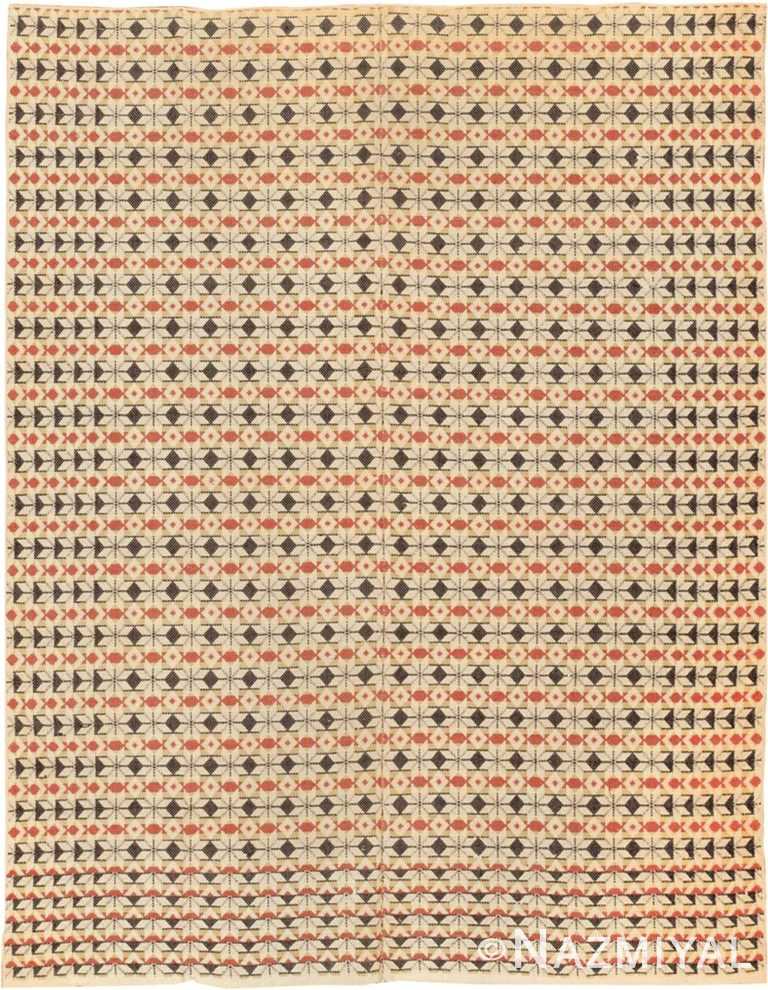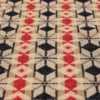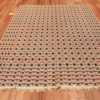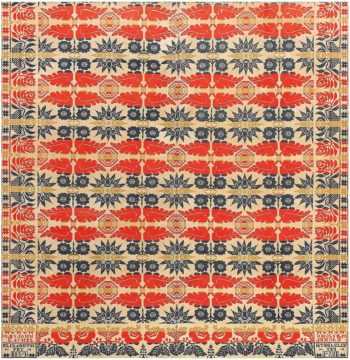Antique American Ingrain Textile 2628
This exquisite antique Ingrain American textile boasts an all-over design pattern of segmented, eight-pointed stars extended end to end in all directions.
Antique American Ingrain Textile, Country of Origin: United States of America, Circa: 19th Century – A beautifully unique and immediately recognizable weaving style, Ingrains textiles, or simply Ingrains, represent a singular development in the world of artisanal weaving. This exquisite antique Ingrain flat weave has an allover patter of segmented, eight-pointed stars extended end to end in all directions. The intervening spaces of small diamonds and diamond-filled squares are accented in contrasting tones of red and dark blue. This sophisticated patterning takes a different turn toward the edges, where only half of the individual star forms comprise the repeating element. Visually this makes the edges functions something like a border. This piece is an eloquent testament to the brilliance of traditional American design. A wonderful Ingrain textile, this charming example beautifully showcases some of that style’s more important and finer points. A unique and exciting antique textile, this 19th century American Ingrain is a beautiful and exceptional work.



















